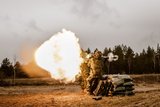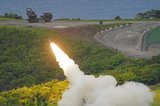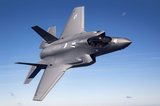Pentagon hushes up data on Taliban in Afghan war
A US government watchdog said on 30 January the US Department of Defense (DoD) has barred it from disclosing how much of Afghanistan is under Taliban control – a significant break from past accountability that comes amid mounting security woes.
At issue are the number of Afghan districts, and the populations living in them, considered to be held or influenced by the Kabul government by insurgents or contested by both.
The US government has sometimes referred to such numbers in the 16-year-old war to show how the Afghan security forces are faring against a resurgent Taliban.
But in a report published on 30 January, the US government's office of the Special Inspector General for Afghanistan Reconstruction (SIGAR) said the DoD had instructed it to no longer disclose the numbers.
John Sopko, special inspector general for Afghanistan Reconstruction, in SIGAR's latest quarterly report, wrote: ‘This development is troubling for a number of reasons, not least of which is that this is the first time SIGAR has been specifically instructed not to release information marked "unclassified" to the American taxpayer.’
The move comes months after Washington in 2017 agreed to an Afghan request to classify data on the number of Afghan security forces killed or wounded in the conflict.
SIGAR said the DoD had also asked its office, for the first time since 2009, to classify the figures detailing the size and attrition rates of Afghan security forces.
The DoD did not dispute that the data had been restricted, but denied it was the agency that had told SIGAR not to publish them, instead pointing to the US-led NATO mission in Afghanistan.
Lieutenant Colonel Mike Andrews, a spokesman from the US DoD, said: ‘In this case, NATO's Resolute Support, as the original classification authority, made a classification determination that restricted the public, unclassified release of the information.’
General John Nicholson, who commands US and NATO forces in Afghanistan, has said 80% of the Afghan population can be under government control within about two years, up from less than two thirds today.
But tracking progress toward such a goal would be difficult without any numbers being released.
Sopko said: ‘Historically, the number of districts controlled or influenced by the government has been falling since SIGAR began reporting on it, while the number controlled or influenced by the insurgents has been rising.’
He added that this ‘fact that should cause even more concern about its disappearance from public disclosure and discussion'.
Militants including the Taliban and the Islamic State group have stepped up their attacks on Afghan troops and police in recent months.
On 27 January, a Taliban suicide attacker driving an explosives-packed ambulance blew it up in a crowded area of the capital, killing at least 103 people – mainly civilians – and wounding 235 in one of the worst bombings in the city in recent years.
More from Defence Notes
-
![Taiwan approved for purchase of $11 billion in weapons from US]()
Taiwan approved for purchase of $11 billion in weapons from US
The US State Department’s approval of a multi-billion-dollar sale of weapons to Taiwan includes tactical mission networks equipment, uncrewed aerial systems, artillery rocket systems and self-propelled howitzers as well as anti-tank guided missiles.
-
![US National Security Strategy prioritises advanced military capabilities and national industry]()
US National Security Strategy prioritises advanced military capabilities and national industry
The 2025 NSS has emphasised investment in the US nuclear and air defence inventory and national industry, but it leaves multiple unanswered questions on how the White House will implement this approach.
-
![Canada set to look away from its neighbour and across the Atlantic for partners]()
Canada set to look away from its neighbour and across the Atlantic for partners
While non-EU UK struggles to join the Security Action for Europe initiative, which provides loans for defence programmes, Canada has become the first country outside Europe to get access – and did so for a nominal fee.
-
![NATO experiments with solutions to integrate networks, AI and uncrewed systems]()
NATO experiments with solutions to integrate networks, AI and uncrewed systems
During the latest edition of the NATO DiBaX, the alliance tested multiple capabilities to inform requirements for future efforts.
























